Authentic 20-Minute Garam Masala Recipe
Follow these steps at home to make authentic garam masala in the traditional way. Widely used in Indian and Pakistani cuisine, this aromatic spice blend is known for its rich, complex flavors and its ability to add warmth and depth to a variety of South Asian recipes. Plus, it makes a small batch that’s made to fit in any standard spice jar. Ready within just 20 minutes!
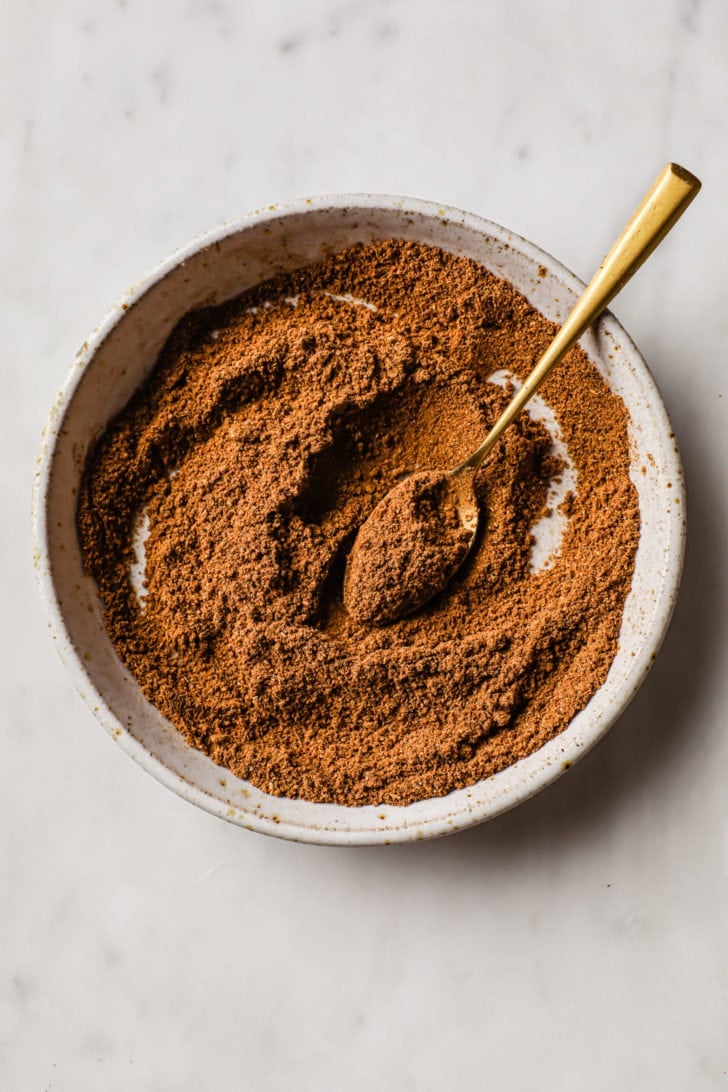
Want to save this post?
Enter your email below and get it sent straight to your inbox. Plus, get recipes & tips every week!
What is Garam Masala?
The word garam means ‘warm or hot’ and masala translates to ‘spices or blend’. As the name suggests, Garam Masala is a warming spice blend made by toasting and grinding whole spices.
I’m quite fluid when it comes to homemade Garam Masala.
I’m not sure there’s any magic ratio of spices. I have no secret family recipe and I probably won’t ever make it in a ‘fixed way’. But, I’ve made garam masala many times with many different recipes and here are a few things I’ve learned:
Spice snobs unite! If you love making your own homemade South Asian spice blends, try my easy Chaat Masala blend or learn all about making & using your own cumin and coriander powder!
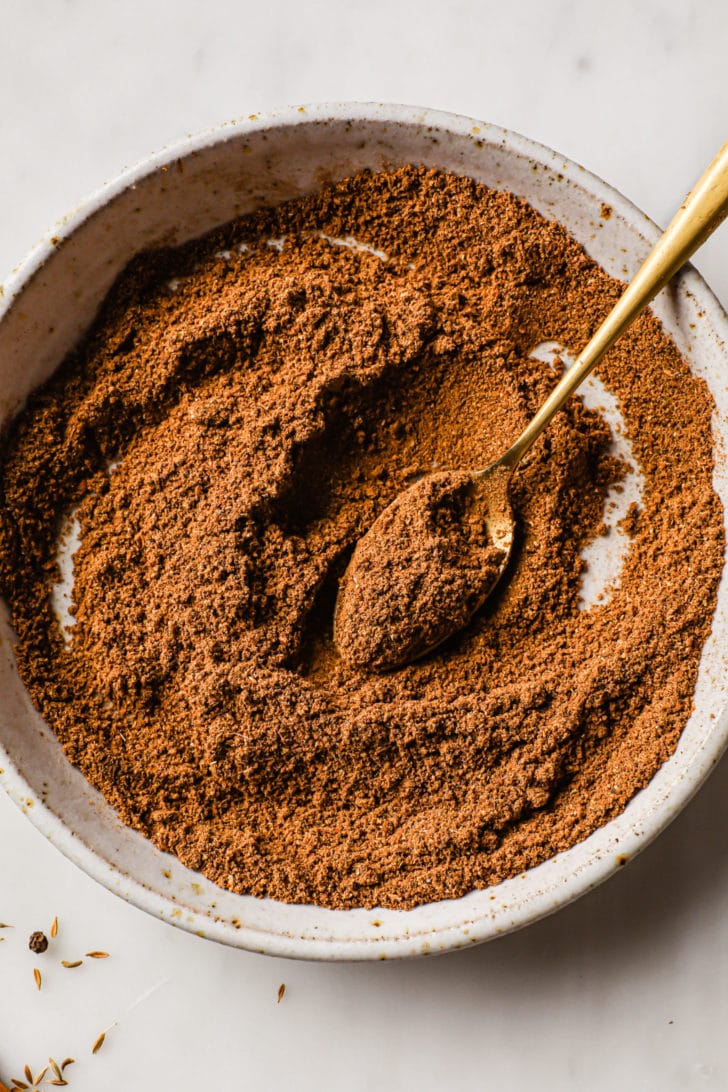
The 5 Essential Spices in Every Authentic Garam Masala Recipe
I analyzed over 10 Indian cookbooks to see what the most common spices are for garam masala. Almost every garam masala recipe had these 5 essential spices:
- Black peppercorns
- Cumin seeds (or sometimes black cumin seeds)
- Cinnamon sticks
- Black cardamom pods (If they don’t have black cardamom, they’ll always have green.)
- Whole cloves
After these, you’ll often see green cardamom pods (even if black cardamom pods are used), coriander seeds, bay leaves, and mace. Less common are fennel, star anise, and nutmeg. And even fewer recipes use ground ginger, poppy seeds, and dried chilis.
Interesting fact: The essential 5 also happen to be the main spices used in Punjabi garam masala.
This may be a helpful way to think of Garam Masala:
Each spice has a knob that you can dial up or down to change the intensity of that particular spice. There is no right or wrong, it’s just what you prefer.
Garam Masala Ingredients
Here are the whole spices you’ll need for this recipe. It’s perfectly okay if you don’t have all of these spices. Use what you have and you’ll find the freshness alone makes this aromatic spice blend better than any store-bought blend.
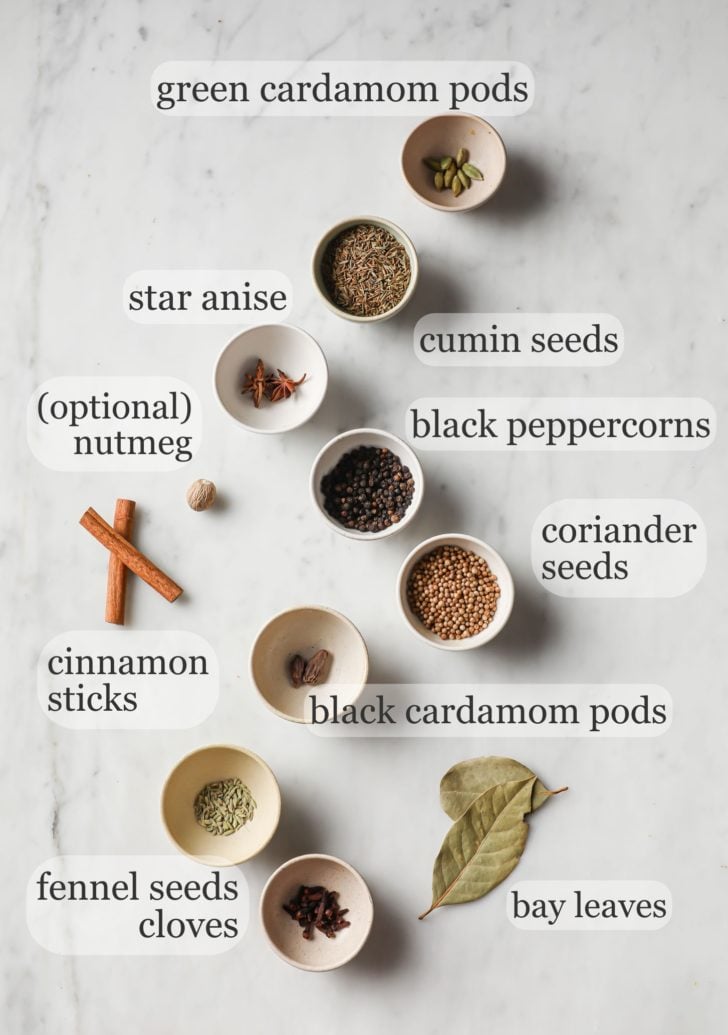
- Black peppercorns: An essential for garam masala, black pepper lends it warmth and sharpness.
- Black cardamom pods: These are larger and stronger than green cardamom pods. Unlike green cardamom pods, they’re always used whole. If you break them open, you’ll find seeds similar to green cardamom pods. Substitute: If you don’t have black cardamom, increase the amount of green cardamom.
- Coriander seeds: Though too much clutters the aromatic spices, using coriander ‘tones down’ the garam masala and makes it more versatile.
- Cumin seeds: Some blends use black cumin seeds (shah zeera or kaala zeera), which are more robust and pungent compared to regular cumin seeds. If you’d like to use them, replace the cumin seeds with 1/2 of the quantity (or 1 tbsp) of black cumin seeds.
- Cinnamon sticks: Another garam masala essential. I typically use ceylon, but cassia is fine. Break up the cinnamon sticks to help them toast evenly and make them easier to grind in the spice grinder.
- Cloves: Another absolutely essential sweet and savory spice that adds texture and depth to the blend.
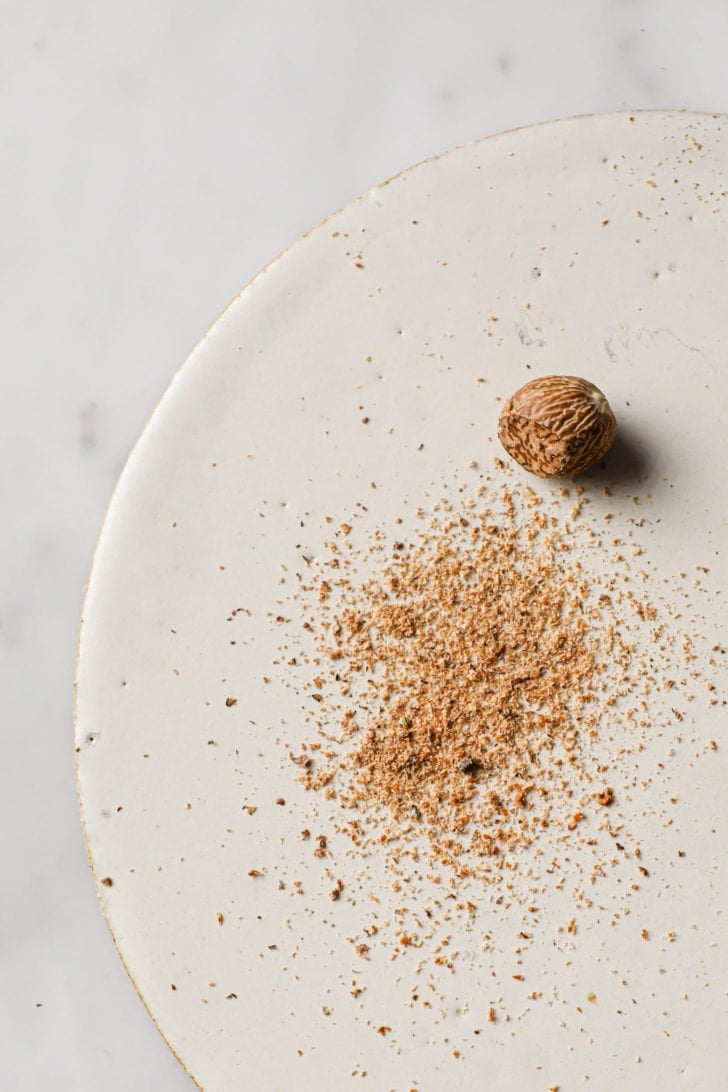
- Green cardamom pods: When using green cardamom pods, discard the pod and use the seeds.
- Fennel seeds: I debated if I should make this an optional ingredient. Fennel is not one of the essentials but it adds a subtle, sweet aroma. (Also used in: Nihari)
- Star anise: Star anise imparts a beautiful, sweet fragrance without actually sweetening the blend. (Also used in: Biryani)
- Bay leaves: I can’t pinpoint any strong flavor of the bay leaves. Like several of the non-essential spices, it simply adds complexity to the final blend.
- Mace blade (optional – not pictured): If you use it, a small blade of the whole flower-like mace piece will be enough. You can also use a pinch of pre-ground mace and add it along with the nutmeg. (Also used in: Korma)
- Nutmeg (optional): Grate nutmeg like you would zest a lemon. You can also use a pinch of pre-ground nutmeg powder.
How to make Garam Masala Powder
Here’s how to make homemade garam masala in 3 easy steps:
- First, toast the whole seeds. Most of them will turn deeper in color and become highly aromatic. Be careful not to toast too much as it can create bitterness.
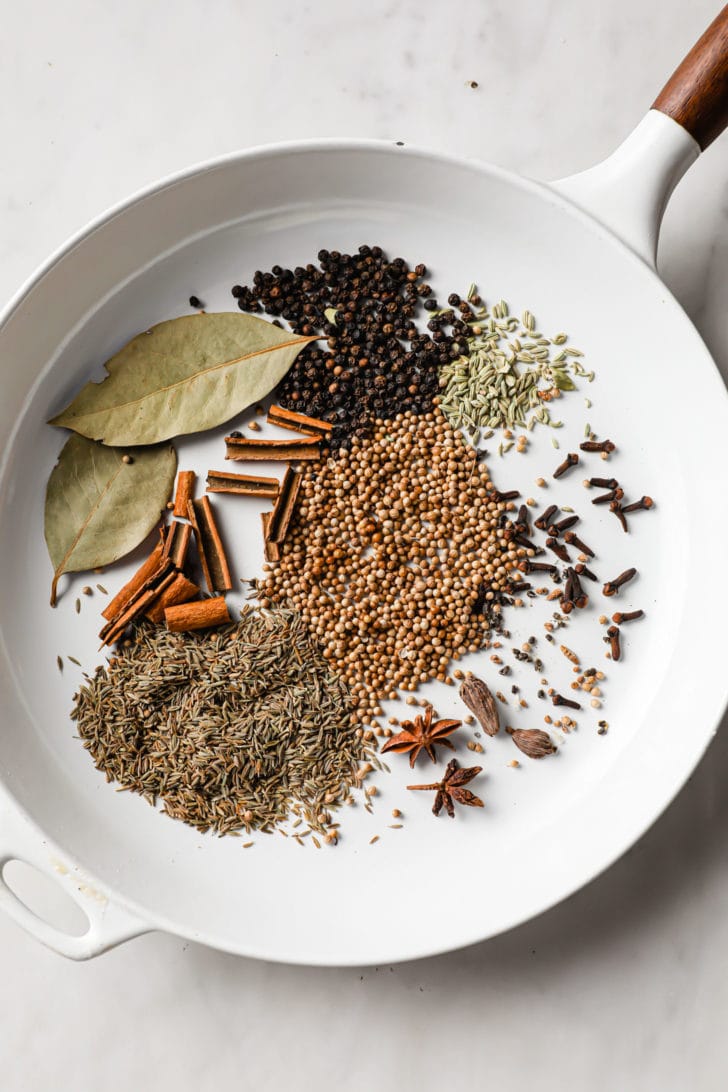
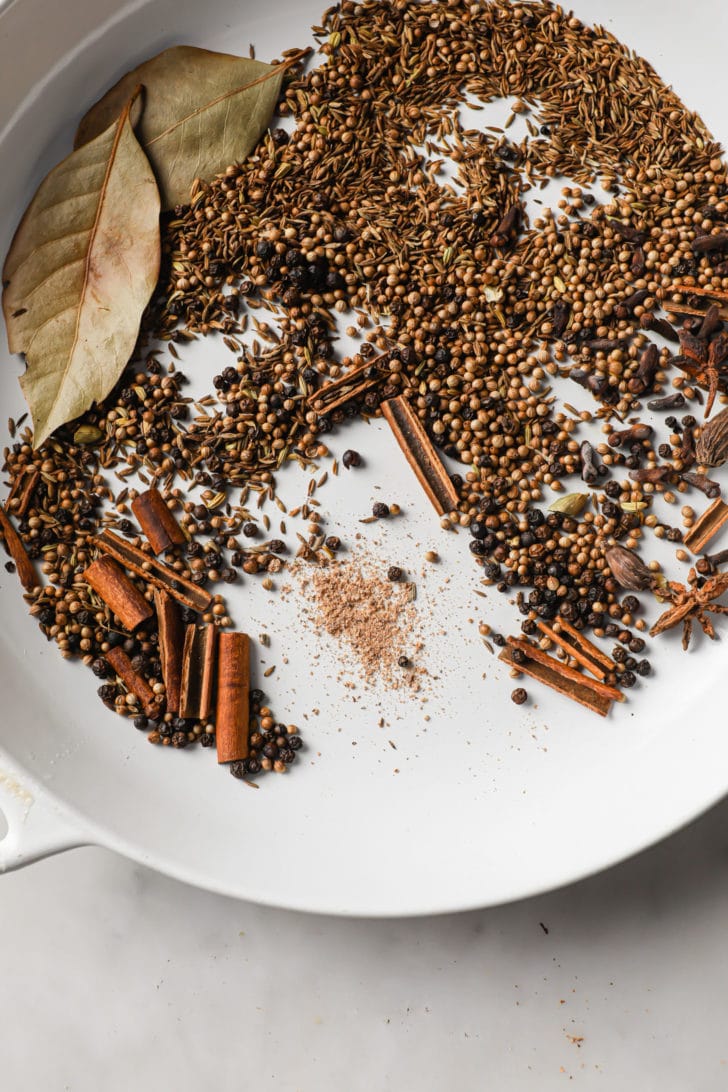
- Remove from heat and allow the spices to cool. Blending them when they’re still warm can create moisture in the powder. If you’re using nutmeg, grate some in now.
- Grind into a fine powder, shaking the spice grinder as needed to evenly distribute the powder. Store in an airtight spice jar for up to 3 months.
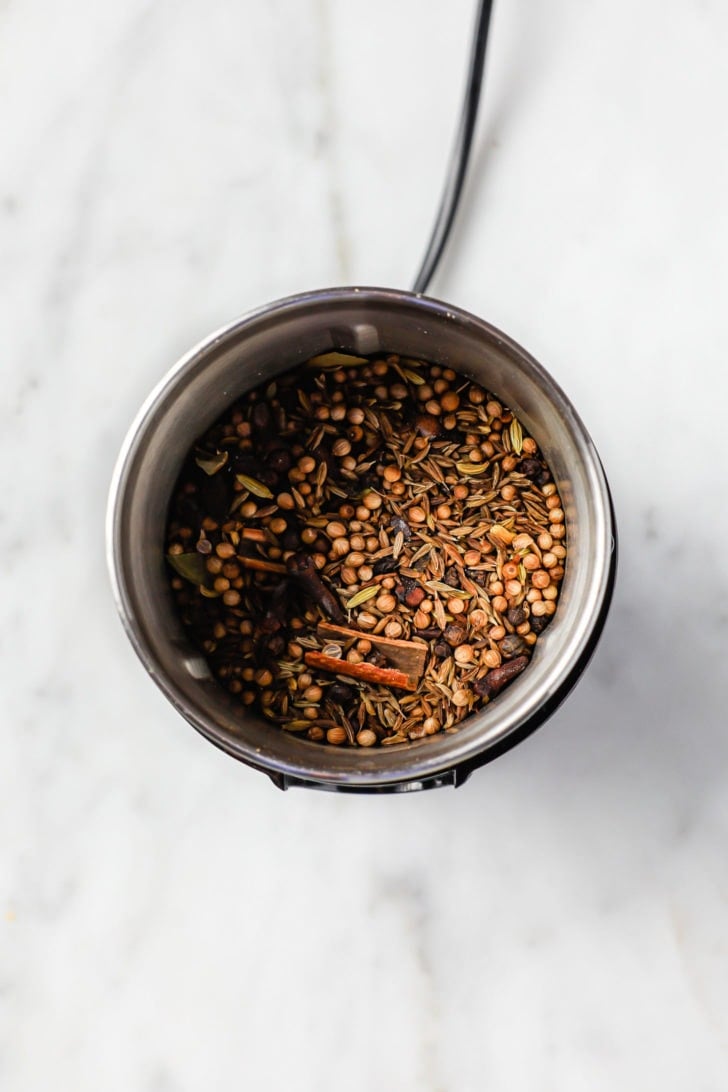
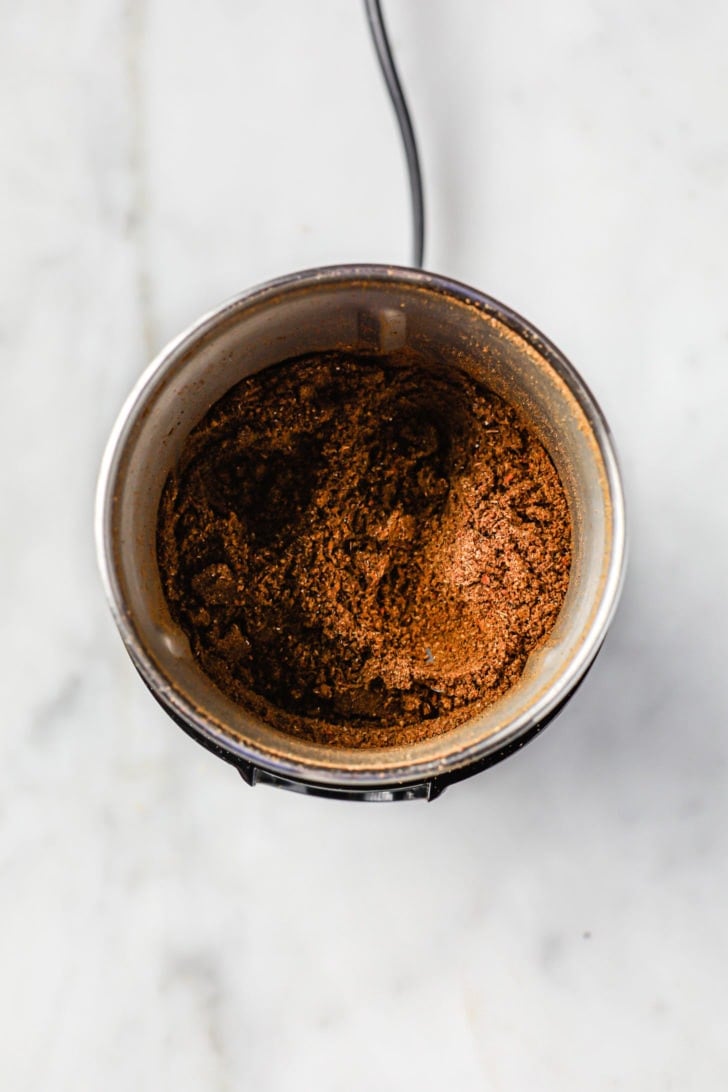
FAQs
If you’re familiar with Indian & Pakistani cuisine, you know that curry powder is not a traditional blend. Curry powder is used in larger quantities (1-2 tbsp) within recipes in the earlier stages of cooking them. On the other hand, garam masala is often used in small amounts (1/4-1/2 tsp) once a main dish is cooked.
Some garam masalas, especially those made from ‘sweet’ spices that are often used in dessert (cardamom, nutmeg, cinnamon, and cloves) can be left untoasted. However, this recipe requires toasting. If you’d rather not toast it, use it earlier in the cooking process so the spices aren’t left raw.
No. Garam masala is warming, but not spicy-hot. If you’d like to make it spicier, you can add whole dried red chilies to the blend.
Yes! Before spice grinders, mortar & pestles or flat stone slabs (“sil butta“) were used to grind spices by hand. A lot more tedious, but gets the job done beautifully.
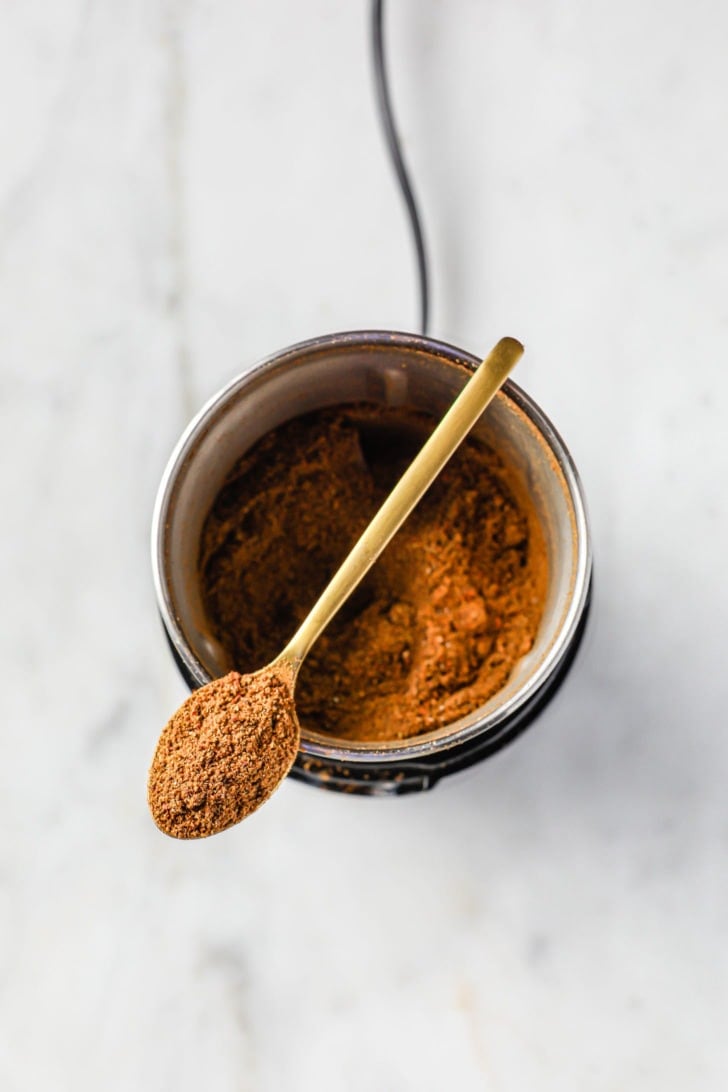
Garam Masala Uses
This recipe can be used in any recipe (mine or otherwise) that calls for garam masala. Depending on the recipe, you may have to adjust the amount it calls for.
When to add
Because the spices are already toasted/cooked, you can add garam masala once you’ve finished cooking.
Tip: An indication that a curry has finished cooking is when you can see the oil resurfacing and separating from the masala of the curry. That’s when you’ll turn the heat off and add Garam Masala as a finishing touch along with cilantro, lemon, or other garnishes.
That said, many recipes (such as my Seekh Kebab) call for for this aromatic seasoning earlier in the dish and it can even be used as a marinade.
How much to add
Less is more when it comes to Garam Masala. Because it’s more fragrant than other spices, it’s better to start with a smaller amount (1/4 tsp) and increase as needed (up to 1/2 tsp). I wouldn’t use more than 3/4 tsp of this Indian spice mix in any curry as it’ll start to overpower the flavor.
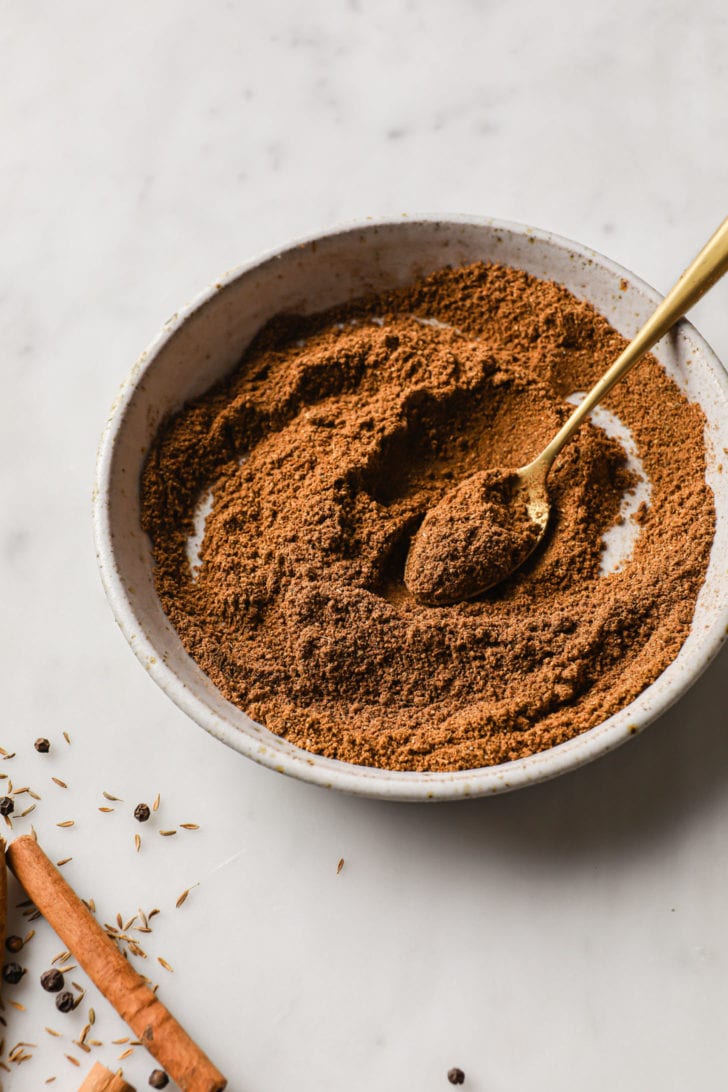
Recipes that use Garam Masala
- Baked Pakistani Seekh Kabob (Ground Beef Skewers)
- Authentic Instant Pot Chicken Curry
- Chana Masala (Authentic Chickpea Curry)
- Pakistani Beef Kofta Curry (Meatball Curry)
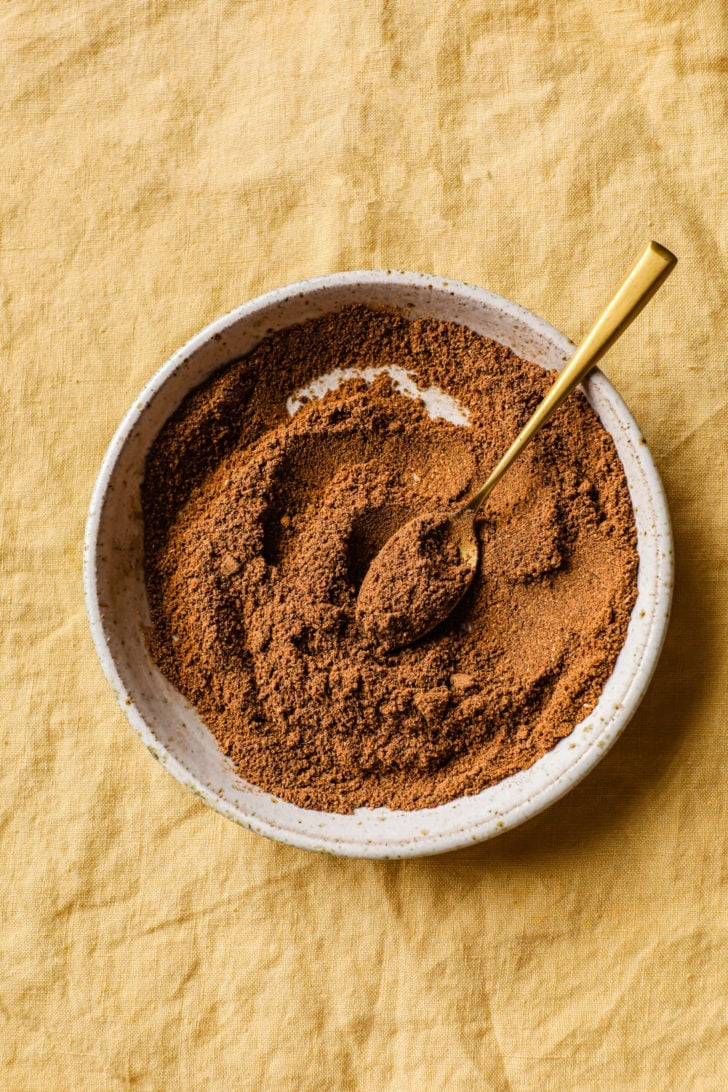
Tried this recipe? If you have a minute, please consider leaving a comment telling me how it was! If you’re on Instagram, please tag me so I can see your creations. I truly love hearing from you. Thank you!
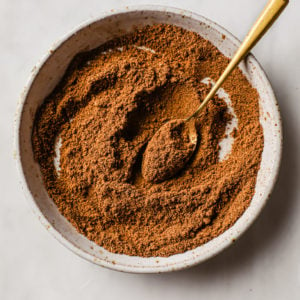
Authentic 20-Minute Garam Masala Recipe
Watch the Video
Ingredients
- 2 tbsp (8 g) coriander seeds, (sookha dhaniya)
- 2 tbsp (16 g) cumin seeds, (zeera)
- 1 tbsp (8 g) black peppercorns, (kaali mirch)
- 3/4 tsp (2 g) cloves, (loung)
- 3/4 tsp (2 g) fennel seeds, (saunf)
- 2 black cardamom pods, (bari elaichi)
- 1 (2 g) whole star anise, (badiyan ka phool)
- 2 3-inch dried bay leaves , (tez patta) – broken up into a couple pieces
- 1 3-inch (4 g) cinnamon stick (both cassia bark and ceylon are fine), (darchini) – broken up into pieces (I use a mortar & pestle to break)
- 8-10 (1 g) green cardamom pods, seeds removed, shells discarded ~1/2 tsp seeds
- 1 1-inch mace blade (optional), (javitri)
- 1 pinch of freshly grated nutmeg (optional), (jaiphul)
Equipment
- Standard Spice jar for storage
Instructions
- Heat a medium skillet over low-medium heat. Add all the spices in the order they're listed except for the nutmeg (if using). Toast, stirring and shaking the skillet often, for 3-4 minutes. Most spices will deepen in color and become highly aromatic. The bay leaves and cinnamon will start to look dry and brittle.
- Remove from heat. If using nutmeg, use a grater to grate a generous pinch into the toasted whole spices. Allow to cool.
- Transfer the spices to a spice grinder. (A spice funnel makes this easier!) Grind to a fine powder, stopping the grinder to help evenly distribute the spices. Transfer the powder to an spice jar with an airtight lid, cover and store for up to 3 months.


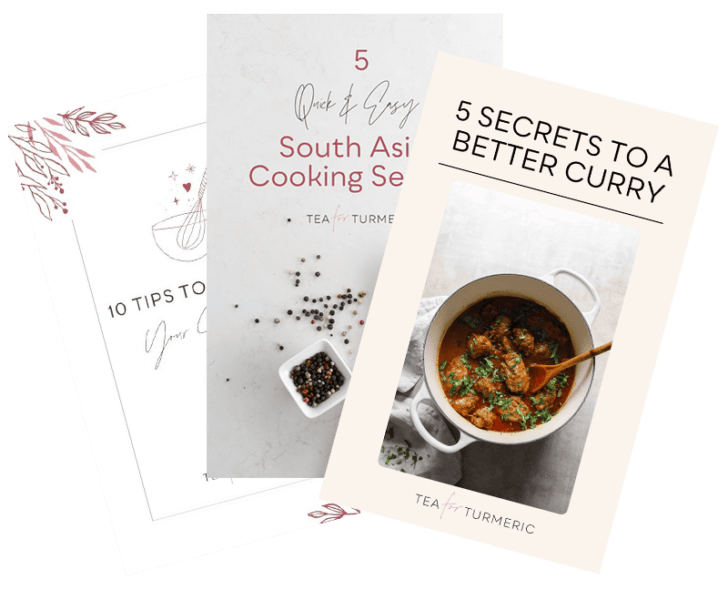
5 Comments on “Authentic 20-Minute Garam Masala Recipe”
Salaam Izzah!
I love your recipes, they have saved me during entertaining and making a good first impression, I lovvee using them as a base and then tweaking them to make them my own as well. Thank you for sharing such well-grounded recipes!
I wanted to ask if you’ve heard of Hyderabadi garam masala. I’ve never seen it in cook books and it makes all the difference in Hyderabadi recipes. It’s much warmer (it doesn’t have the addition of cumin or coriander) and is a key ingredient in Hyderabadi biryani.
I know it’s used in the marination process for the meat instead of adding it to the end so I’ve actually always wondered why recipes call for the use of garam masala in the end.
I would love to read your take on this and see if you’ve played around with any Hyderabadi recipes. It’s just super interesting to me how different cultures cook foods differently with even the same spices, by adding them to the beginning or end of the cooking process that end up with a different flavor profile.
Hi- 4 to 8 grams of cinnamon is a wide range. Since you use Ceylon cinnamon, I presume you use 8 grams. Can you please confirm? Thanks!
Hi Wess, the wide range is because Cassia is stronger in taste and scent. If you’re using it, I’d suggest the lower quantity.
Hi there! What spice grinder do you use? thanks!
I use the Cuisinart Spice & Nut Grinder. It’s linked in my Shop page!